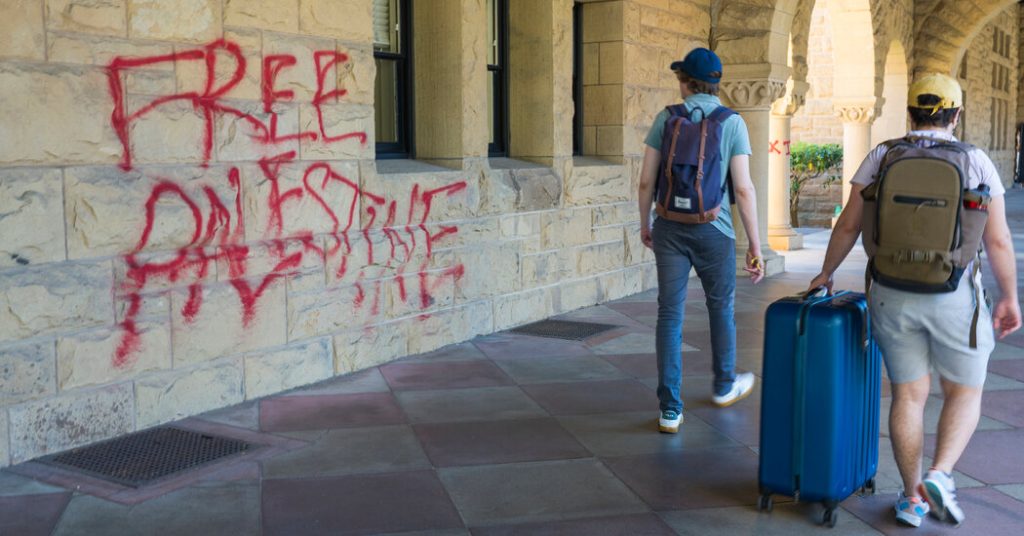Thirteen people were arrested by police at Stanford University after pro-Palestinian protesters barricaded themselves in the office of the university president demanding a vote by the trustees on divesting from companies supporting Israel’s military. The protesters, who entered the building early in the morning, caused extensive damage and covered walls with graffiti criticizing the police, Stanford, and Israel. The university police officers cleared the building in about three hours, with one officer injured during the arrests. Any students arrested will face consequences, including suspension and potential graduation restrictions.
Following the arrests, law enforcement officials began dismantling a Pro-Palestinian encampment that had been on campus since late April, as well as a nearby pro-Israel display. Pro-Palestinian protests have been prevalent on college campuses nationwide this spring, leading to over 3,000 arrests or detentions. While Stanford had been relatively calm compared to other large universities in California, there have been incidents such as a melee at UCLA and a week-long occupation at California State Polytechnic University, Humboldt. Encampments at other campuses have mostly been cleared by officers or dismantled as the academic year ended.
The People’s University for Palestine, a protest group at Stanford, occupied Building 10 and announced their intention to remain until their demands were met. These demands included the consideration of divestment from companies like Hewlett-Packard, Lockheed Martin, and Chevron that allegedly support the Israeli military in Gaza. The group also called for the university president to support the divestment proposal, disclose endowment holdings, and drop disciplinary measures against Pro-Palestinian student activists. The standoff ended with the arrests and the clearing of the office building where the protesters were barricaded.
The incident at Stanford highlights the ongoing tensions surrounding the Israeli-Palestinian conflict and the divestment movement on college campuses. While some universities have seen violent clashes and prolonged occupations, others have resolved disputes through dialogue or agreements with student groups. The aftermath of the protest at Stanford may lead to further discussions about divestment policies, freedom of expression, and campus security. University administrators will likely evaluate their response to such events and consider ways to address grievances and maintain a safe and inclusive campus environment.
The actions of the protesters at Stanford raise questions about the effectiveness of civil disobedience in advocating for political causes and how universities should balance free speech rights with maintaining order on campus. The demands made by the People’s University for Palestine reflect a broader campaign to pressure institutions to divest from companies engaged in activities perceived as supporting human rights violations. The fallout from the protest may influence future activism on campus and prompt institutions to reevaluate their investment practices and engagement with contentious political issues.
In conclusion, the protest at Stanford University involving Pro-Palestinian demonstrators highlights the ongoing debate over divestment policies and activism on college campuses. The stand-off, arrests, and dismantling of encampments demonstrate the challenges universities face in managing conflicts related to political issues. The aftermath of the incident will likely lead to discussions about campus security, free speech rights, and the role of universities in addressing global conflicts. While the specifics of the protest at Stanford may fade, the broader issues surrounding the Israeli-Palestinian conflict and divestment movements will continue to shape discussions and actions in higher education settings.


